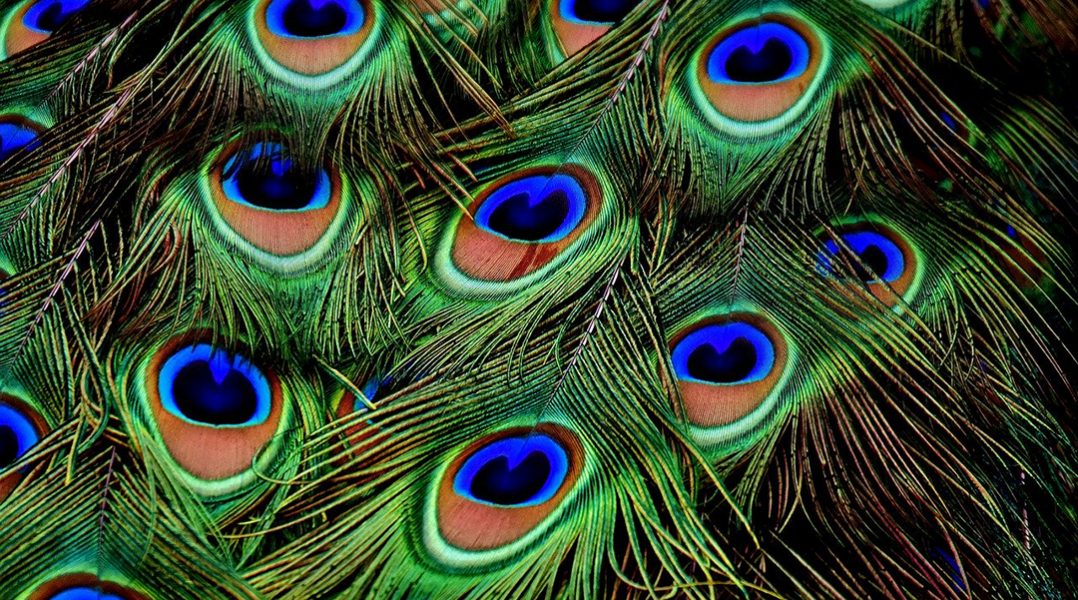Taking inspiration from nature, scientists have developed an innovative, opal-like material that behaves in much the same way as peacock feathers or butterfly wings, that could become the cornerstone of next-generation smart sensors.
Publishing in Advanced Functional Materials, an international team of researchers based at the University of Surrey and University of Sussex, UK, show this opal-like material to be extremely sensitive to changes in temperature, strain, and light. These changes in stimuli are translated as changes in color in the material, obvious enough to the naked eye, eliminating the need for electrical sensors to give off a reading.
The photonic crystals were made by the self-assembly of soft polymer colloids, and then a small amount of graphene was introduced into the crystal lattice. The graphene endows the crystals with a very strong, angle-dependent color, which can change across the visible spectrum.
Colored green under normal conditions, the extremely versatile sensors change to blue when stretched or turn transparent with an increase in temperature. This is shown in the figure below. But what’s crucial is that such changes are reversable, making them ideal candidates in a range of applications.

“This work provides the first experimental demonstration of mechanically robust yet soft, free-standing and flexible, polymer-based opals containing solution-exfoliated pristine graphene,” said Dr. Izabela Jurewicz, lead author of the study, in a press release. “While these crystals are beautiful to look at, we’re also very excited about the huge impact they could make to people’s lives.”
Proposed applications include time-temperature indicators in packaging of perishables such as food or pharmaceuticals. As the material is extremely sensitive to even slight temperature changes between 20 °C and 100 °C, and correspondingly changes color, the material is ideal for showing if perishable goods have gone beyond the boundaries of their optimal storage temperatures.
The work represents, once again, the recognition that perhaps the most innovative new technologies need only look at what’s right in front of us, in nature, to be the source of inspiration. Such new technologies fall under the burgeoning field of “biomimicry”, and could revolutionize materials science, as Alan Dalton at the University of Sussex, and co-corresponding author of the study, explained: “Our research here has taken inspiration from the amazing biomimicry abilities in butterfly wings, peacock feathers and beetle shells where the color comes from structure and not from pigments. Whereas nature has developed these materials over millions of years we are slowly catching up in a much shorter period.”
Reference: I. Jurewicz et al., ‘Mechanochromic and Thermochromic Sensors Based on Graphene Infused Polymer Opals.’ Advanced Functional Materials (2020). DOI: 10.1002/adfm.20202473

















